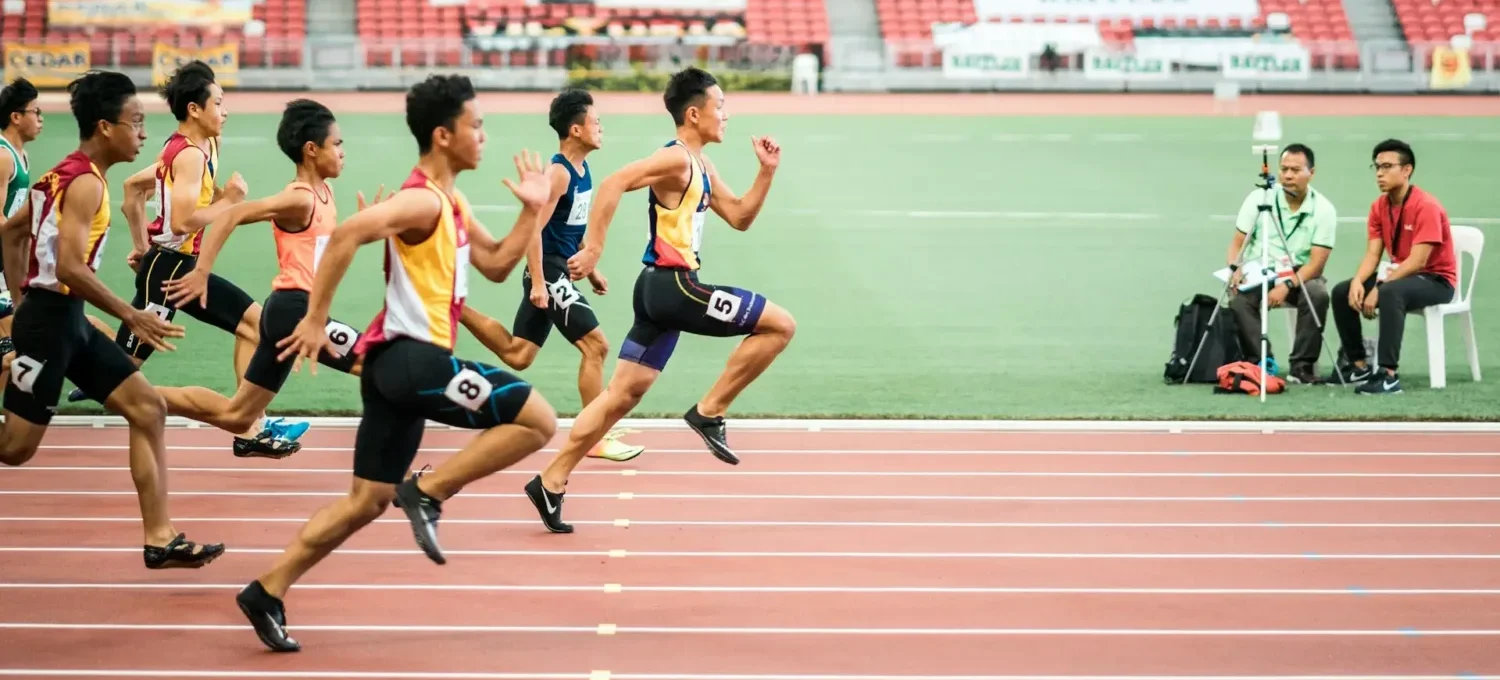Introduction: Why We Often Misjudge Talent
Many people – including coaches, parents, and sports officials – view athletic talent as a fixed trait. The common belief is that children who dominate in competitions early on will automatically have a successful career in elite sports. However, scientific studies show that early competitive success does not necessarily lead to top performance in adulthood (Hohmann & Seidel, 2004).
But why does the myth persist that talent must be recognizable at an early age? And what risks does this mindset pose for young athletes? This article examines the rigid and narrow concept of talent, its flaws, and modern alternatives for talent evaluation.
The Rigid and Narrow Concept of Talent and Its Problems
The rigid and narrow concept of talent assumes that talent is an innate, unchangeable characteristic that manifests early through outstanding competitive performances (Schnabel, Harre & Krug, 2011).
An example from swimming illustrates this perspective: In 1980, Australian swimming coach and researcher Brian Blanksby stated the following about talent selection:
“There is only one test that identifies talent, and that is to line up all the students at the pool’s edge, fire the starting gun, and see who reaches the other side first. The first to finish is the most talented.”
(Blanksby, 1980, pp. 13–19)
This approach reduces talent to a single snapshot – a mindset that is still prevalent in many sports. However, numerous scientific studies contradict this concept.
Why This Concept of Talent Is Problematic
The Non-Linear Development of Athletes
Athletic performance does not develop in a straight line. Many elite athletes were not outstanding in their early years but developed gradually over time. Hohmann & Seidel found that many top athletes were late bloomers. For example, Lionel Messi was initially considered unsuitable for professional soccer due to his small stature – yet today, he is regarded as one of the greatest players of all time (Hohmann & Seidel, 2004).
Furthermore, talent development is always individual. It depends on multiple factors such as training adaptations, biological growth, and psychological aspects (Gagné, 2004).
The “Early Success Bias”
Many coaches and talent scouts fall into the “Early Success Bias” – they assume that children with early competition success will automatically become top athletes later on (Vaeyens et al., 2008).
However, this assumption often leads to misjudgments because early-developing children may have temporary physical advantages that are mistakenly interpreted as talent. Consequently, late bloomers receive less support and are often excluded early, even though they may have significant potential (Romann & Cobley, 2015).
In practice, this means: A 10- or 12-year-old who dominates in competitions is not necessarily more talented – they may simply be more physically advanced.
Biological Age: An Unfair Advantage
A child’s biological age can differ by up to four years from their chronological age (Joch & Hasenberg, 1999). For example, two 12-year-old athletes might actually have a biological age of 14 and 10, respectively – leading to significant performance differences.
The Relative Age Effect (RAE) describes the phenomenon where older children within a given age group are disproportionately selected for talent development programs due to their physical superiority (Lames et al., 2008). This issue is particularly well-documented in soccer, where most youth academy players are born in the first quarter of the year – systematically disadvantaging those born later.
Scientific Criticism of the Rigid Talent Concept
Over the past decades, numerous scientific studies have shown that the rigid concept of talent often leads to misjudgments. A major problem is its failure to differentiate between biological maturity and actual potential. As a result, early-developing athletes may be overvalued, while late bloomers are overlooked. Researchers from various disciplines – from sports science to psychology – have examined the relationship between early success and later elite performance, concluding that talent development is a complex and long-term process.
Research Findings That Debunk the Myth
One key study on this topic comes from Hohmann & Seidel (2004), who analyzed factors leading to athletic success in their Magdeburg Talent Study. Their findings revealed that many future elite athletes did not stand out in youth competitions. Instead, their success was characterized by continuous improvement and high adaptability to training stimuli. This suggests that early competition victories are not a reliable predictor of adult elite performance.
Schnabel, Harre & Krug also emphasize that talent development is a dynamic process. While some athletes peak early, others reach their full potential much later. The authors argue that premature selection based solely on competition results leads to inefficient talent development, as promising athletes may be overlooked or eliminated too soon (Schnabel, Harre & Krug, 2011).
Practical Data: How Many Early Talents Fail?
The gap between early success and later elite performance is evident in many sports. In soccer, this issue is particularly well-documented. According to a study by Vaeyens et al., only 2–5% of the top U15 players eventually make it to professional leagues. This means that over 95% of supposedly talented youth players never reach the highest level. A similar trend is seen in track and field, where many early stars fail to sustain success in adulthood (Vaeyens et al., 2008).
Swimming provides another example. Early-successful swimmers often have shorter careers than late bloomers. One reason may be that they experience high training loads at a young age, leading to physical and mental burnout. Additionally, early bloomers often benefit from temporary biological advantages that disappear over time, while late developers continue to improve steadily (Conzelmann, 2007).
These insights suggest that talent should not be viewed as a fixed trait but rather as a dynamic process that unfolds over years. Early selection based solely on competition results can lead coaches and sports organizations to invest in the wrong athletes, leaving actual potential untapped.
Alternative Approaches to Talent Evaluation
Given the many criticisms of the rigid talent concept, modern talent evaluation models have evolved. Instead of relying solely on competition results, current models consider a variety of factors, including physical and psychological traits, training adaptability, and long-term development potential.
The Dynamic and Broad Talent Concept as a Better Alternative
The dynamic and broad talent concept offers a more flexible alternative to the rigid view of talent as a fixed trait. It suggests that athletic excellence is not solely based on genetics or early success but is influenced by training, environment, and individual development. This concept is applied in the Magdeburg Talent Model (Hohmann & Seidel, 2004), which considers talent as a combination of biological, psychological, and social factors.
A key feature of this model is its long-term approach. Instead of making selection decisions based on single tests or competition results, it tracks an athlete’s progress over several years. This allows for the identification of long-term development patterns and minimizes the impact of short-term fluctuations.
For example, an athlete who does not initially stand out in youth competitions but demonstrates high training motivation and continuous improvement may still have significant potential for elite sports. A dynamic approach makes it possible to identify and nurture such talents early.
Multidimensional Talent Diagnostics Instead of Rapid Selection
Modern talent evaluation increasingly relies on multidimensional assessment methods that measure various aspects of athletic performance. Examples include:
- Physical tests measuring endurance, speed, strength, and flexibility
- Psychological tests assessing motivation, resilience, and concentration
- Technical and tactical tests evaluating sport-specific skills
- Biological age assessment to differentiate between early and late developers
Additionally, AI-based models such as Kohonen Feature Maps are being used to analyze large datasets and predict talent potential based on long-term performance trends.
By incorporating these multidimensional methods, talent evaluation becomes more holistic and reduces the risk of misjudgments.
Conclusion: Why Talent Selection Needs to Change
The rigid concept of talent, which relies heavily on early competitive success, is outdated in many sports. Research has shown that athletic excellence is not solely determined by early success but rather by long-term development, adaptability, and training environment.
To avoid misjudging young athletes, talent identification should shift to long-term, multidimensional methods. Adopting dynamic models such as the Magdeburg Talent Model and advanced data-driven approaches can lead to more effective and fair talent selection. Rethinking talent development is essential to unlocking the full potential of young athletes.
References
- Blanksby, B.B. (1980). Measures of Talent in Competitive Swimming. Sports Coach, 4, S. 13–19.
- Conzelmann, A. (2007). Aktuelle Tendenzen in der Talentforschung. Online verfügbar unter: http://docplayer.org/11175551-Der-sport-wissenschaftliche-talentbegriff.html [Zugriff: 2025-02-03].
- Fuchslochner, J., Romann, M., Laurent, R.R., Birrer, D. & Hollenstein, C. (2011). Das Talentselektionsinstrument PISTE. Leistungssport, 4, S. 22–27.
- Gagné, F. (2004). Transforming gifts into talents: The DMGT as a developmental theory. High Ability Studies, 15, S. 119–147. DOI: 10.1080/1359813042000314682.
- Hohmann, A. & Seidel, I. (2004). Talententwicklung im Leistungssport. Die Magdeburger Talent- und Schnelligkeitsstudie MATASS. In: BISp-Jahrbuch, S. 185.
- Joch, W. & Hasenberg, R. (1999). Das biologische Alter. Leistungssport, 1, S. 5–12.
- Lames, M., Augste, C., Dreckmann, C., Görsdorf, K. & Schimanski, M. (2008). Der „Relative Age Effect“ (RAE): Neue Hausaufgaben für den Sport. Leistungssport, 38, S. 4–9.
- Romann, M. & Cobley, S. (2015). Relative Age Effects in Athletic Sprinting and Corrective Adjustments as a Solution for Their Removal. PLoS ONE, 10(4). DOI: 10.1371/journal.pone.0122988.
- Schnabel, G., Harre, H.-D. & Krug, J. (2011). Trainingslehre – Trainingswissenschaft. 2nd ed. Aachen: Meyer & Meyer Verlag.
- Vaeyens, R., Lenoir, M., Williams, A.M. & Philippaerts, R. (2008). Talent Identification and Development Programmes in Sport. Sports Medicine, 38, S. 703–714.





